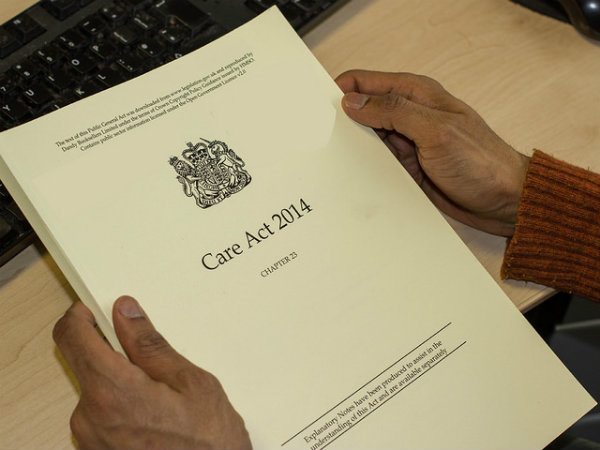
By Clare Evans
Twelve months ago, with the introduction of the Care Act, I was feeling fairly pleased with myself about how things had worked out for me long term as a self-funder with high needs in relation to my plans to cover my care costs for the future.
I had been using home care since the 1980s alongside my husband being my main carer. At that time, even local authority home care was free for all. But as charges were introduced, I became ineligible for local authority support because I had savings of over £23,000. So I purchased private home care to get up in the morning.
Return to work
I returned to work despite the high support needs in 1993 with the assistance of Access to Work funding to pay for personal assistants. This made all the difference to my returning to work because they supported me by driving me, helping with inaccessible paperwork and personal care, and indeed this also enabled me to earn some more funds to put towards future care.
This pattern has continued happily despite increased needs with my weekday daily needs met by my team of PAs. Then I got to the age of planning retirement and I was lucky to find in the Care Act legislation that, when my Access to Work funding ceased in September 2016, a cap on care costs would help limit my care liabilities in the future.
Care cap plan
The cap was due to come into force in April 2016. I had it all planned that I would apply for an assessment as one of the first self funders to be assessed so that by now I would know how much the local authority would pay into a care account to track my progress towards the cap.
Whilst the detail of the national eligibility criteria were not known to me, I thought that needing help with getting up, being fed and help with going to the toilet etc would mean I would be entitled to a care account and to the cap.
Once the funding cap was reached, which I calculated would take about three or four years on my current needs with a main family carer, then we could relax and not have to worry too far into the future.
Dwindling savings
However, then it was decided the cap and other self-funder assistance in the Care Act was too costly to contemplate implementing and local authorities couldn’t cope with the workload of so many new people to assess. So implementation was delayed from 2016 until 2020, five years after the rest of the Care Act came into force. Worse than that, the experts warned that legislation set aside for five years didn’t usually become law at all. Now the future is uncertain whilst all my savings dwindle away.
I know I am not as hard up as most people who use services and so it’s difficult to campaign about my needs, but it also shows what a lottery social care funding is! One consolation perhaps is that that I have not been reduced to having my needs assessed by the local authority at present rather than doing my own planning to meet needs and choosing staff to meet them. I might find the restrictions of eligibility criteria too constraining to deal with! I must hope I don’t outlive my savings!



 Assistive technology and dementia: practice tips
Assistive technology and dementia: practice tips  A trauma-informed approach to social work: practice tips
A trauma-informed approach to social work: practice tips 




 Find out how to develop your emotional resilience with our free downloadable guide
Find out how to develop your emotional resilience with our free downloadable guide  Develop your social work career with Community Care’s Careers and Training Guide
Develop your social work career with Community Care’s Careers and Training Guide  ‘Dear Sajid Javid: please end the inappropriate detention of autistic people and those with learning disabilities’
‘Dear Sajid Javid: please end the inappropriate detention of autistic people and those with learning disabilities’ Ofsted calls for power to scrutinise children’s home groups
Ofsted calls for power to scrutinise children’s home groups Seven in eight commissioners paying below ‘minimum rate for home care’
Seven in eight commissioners paying below ‘minimum rate for home care’
 Facebook
Facebook X
X LinkedIn
LinkedIn Instagram
Instagram
I don’t think it’s an appropriate use of language for someone with social work experience to refer to an LA assessment as ‘being reduced to’. There is no shame in needing or even wanting an assessment. Unhelpful language at best.